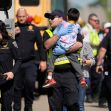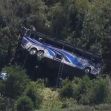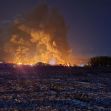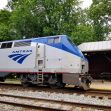As authorities continue their investigation into the deadly derailment of an Amtrak train after it struck a dump truck parked on a rail crossing in Missouri, the first lawsuits placing blame on the derailment have been filed.
Late last month, the driver of the dump truck, Billy Barton III, along with three other passengers on the Amtrak died after the train struck the truck. The deadly accident caused eight train cars and two locomotives to derail and flip over on their side, injuring at least ten passengers and shaking up the roughly 150 others on board.
Following the Collision, three passengers were declared dead. A fourth victim passed away days after because of their injuries.
Authorities have shared that their investigation into the deadly derailment is focusing on the “passive crossing” where the collision took place. It is not believed that a maintenance issue with the track or train was at play.
Throughout much of rural America, it’s common for drivers to come across these passive crossings. Such crossings will display a railroad crossing sign; however, there are no lowering arms from crossing gates, nor any warning lights or bells to alert drivers that a train is coming. Roughly half, or 130,000, railroad crossings nationwide fall under this category of a “passive crossing.”
The chairwoman of the National Transportation Safety Board (NTSB), Jennifer Homendy, shared that investigators are interviewing train passengers and crew members as well as looking at surveillance footage from forward-facing cameras. Homendy did not explicitly share who might be to blame for the derailment, but she did address safety measures and where the responsibility falls for those measures to be implemented. She explained that the state and city officials in conjunction with the BNSF Railway “would be responsible for installing active warning devices at this crossing.” This would include equipment such as gates, bells, or other warnings when trains are approaching.
The crossing where the fatal derailment occurred had been the subject of safety concerns by many locals prior to the derailment. Washington reports that the crossing had been included on a list compiled by the state’s transportation officials as an area where safety improvements were needed. Officials detail that the crossing was subjected to a safety overhaul in which additional crossing warnings would have been installed, but a diagnostic assessment was needed before those improvements could be made. A spokeswoman for BNSF, Lena Kent, shared that updates for the diagnostic assessment had not been set; therefore, it's not clear when those safety measures would have been implemented.
“We could not move forward with additional crossing warning devices until a diagnostic had been set up and all parties agreed to what warning devices would be installed,” Kent shared.
As authorities continue their investigation and different agencies explain their role in the safety measures regarding the crossing, the first lawsuits regarding the derailment have begun to trickle forward.
The Kansas City Star reports that at least three lawsuits have been filed on behalf of passengers and crew members injured aboard the Amtrak train. The lawsuits highlight that the train crossing where the collision occurred has had a number of safety concerns brought against it. The truck driver's widow filed a lawsuit in which she blames the BNSF manager and the county for not having proper safety measures in place. Her lawsuit entails that a lack of visibility and a substandard warning system were to blame for the deadly collision.
Other claims made in a suit filed by surviving passenger Janet Williams of Dubuque detail that because the train was severely overbooked, overcrowding caused “cattle car conditions” which made the collision even more dangerous for passengers and crew members.
Amtrak has filed a federal lawsuit of its own pinning the blame on the dump truck driver. It’s not yet clear why the driver was on the train tracks, but Amtrak contends the driver was the catalyst for the deadly derailment. In its lawsuit, Amtrak contends that the driver was “unsafe, careless and reckless” in the manner in which he crossed the tracks. The lawsuit also names the driver's employer for being negligent in training drivers and properly maintaining its trucking equipment.






